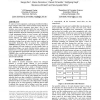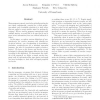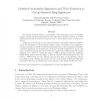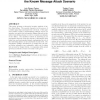318 search results - page 28 / 64 » How to Leak a Secret |
EDBT
2008
ACM
14 years 7 months ago
2008
ACM
To carry out work assignments, small groups distributed within a larger enterprise often need to share documents among themselves while shielding those documents from others'...
CCS
2009
ACM
14 years 2 months ago
2009
ACM
Many programs operate reactively, patiently waiting for user input, subsequently running for a while producing output, and eventually returning to a state where they are ready to ...
ACISP
2007
Springer
14 years 1 months ago
2007
Springer
The identity of “Deep Throat”, a pseudonym of the information source in the Watergate scandal, remained mysterious for more than three decades. In 2005, an ex-FBI official cla...
PKC
2007
Springer
14 years 1 months ago
2007
Springer
Abstract. The ring signature allows a signer to leak secrets anonymously, without the risk of identity escrow. At the same time, the ring signature provides great flexibility: No ...
MMSEC
2006
ACM
14 years 1 months ago
2006
ACM
This paper presents a theoretical security analysis of lattice data hiding. The security depends on the secrecy of a dither signal that randomizes the codebook. If the same secret...




